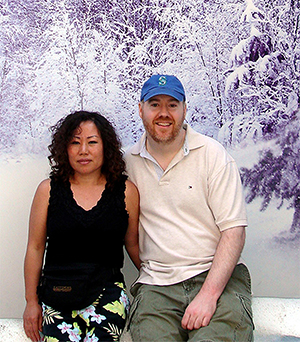
 Photography Tips for Everyday Moments
Photography Tips for Everyday Moments
The most extraordinary beauty is often found in ordinary moments. In this series, William Stanek helps you see the world through a new lens, transforming everyday experiences into stunning photographic memories.

Transform your life with practical wisdom. Discover William Stanek's 'Living Well' series—your guide to a balanced and fulfilling life.
Discover William Stanek's Exclusive Art Collection
Explore and purchase the stunning art featured on this site. Own a piece of William Stanek's unique and captivating artwork today!
(April 25, 2025) Seasonal Shifts: Capturing the Changing Mood of Everyday Moments
The changing seasons bring a dynamic shift in light, color, and atmosphere, offering photographers a wealth of opportunities to capture the unique mood of each time of year. Whether it’s the warm, golden hues of autumn, the stark minimalism of winter, the vibrant renewal of spring, or the bright glow of summer, each season provides a different canvas for your creativity. Here, we’ll explore how to reflect the changing seasons in your photography, teaching you how to capture the essence of each season as it transforms the world around you.
Introduction: The Art of Seasonal Photography
There’s a special magic in photographing the changing seasons. Each one has its own mood, light, and colors, transforming familiar scenes into something new and inspiring. As a photographer, learning to capture the essence of each season not only enhances your images but also deepens your connection to the world around you.
Seasonal photography is about more than just documenting the passing of time—it’s about expressing the emotions and atmosphere that each season evokes. From the cozy warmth of autumn to the vibrant awakening of spring, the seasons offer endless opportunities to explore light, color, and composition in your photography. In this article, we’ll dive into practical tips for capturing the mood of each season, helping you create images that reflect the beauty and diversity of the changing year.
Autumn's Warmth: Highlighting the Rich Colors and Light of Fall
Autumn is a season of warmth and transformation, with its rich palette of reds, oranges, and yellows. The light becomes softer and more golden, casting a warm glow over the landscape. Capturing the essence of autumn means embracing these colors and light, creating images that evoke the cozy, nostalgic feel of the season.
Emphasizing Warm Tones: The most iconic aspect of autumn photography is the vibrant foliage. Look for scenes where the warm colors of the leaves—reds, oranges, yellows—are prominent. These colors are enhanced during the golden hour, when the sunlight is warm and low in the sky. Position yourself to shoot with the sun behind or to the side of your subject, illuminating the leaves and bringing out their rich hues.
Capturing the Atmosphere: Autumn is also about the mood—the misty mornings, the crisp air, and the sense of change. To capture this atmosphere, try photographing early in the morning when the mist is still rising from the ground. This creates a soft, ethereal effect that contrasts beautifully with the vibrant colors of the foliage. You can also play with backlighting to highlight the mist and add depth to your images.
Playing with Textures: Autumn is a season rich in texture, from the rough bark of trees to the soft, fallen leaves on the ground. Use these textures to add depth and interest to your compositions. For example, photograph a close-up of leaves scattered on the forest floor, or capture the rough texture of a tree trunk with the colorful leaves as a backdrop.
Pro Tip: Experiment with different focal lengths to capture both the grand scale of autumn landscapes and the intimate details. A wide-angle lens can showcase the vast expanse of a forest in full color, while a macro lens allows you to focus on individual leaves or acorns, highlighting the textures and colors up close.
Exercise: Spend a day photographing the colors and textures of autumn. Focus on capturing the warm tones of the foliage and the soft, golden light of the season. Experiment with different compositions and lighting conditions, such as misty mornings or backlit leaves, to create images that evoke the cozy, nostalgic mood of fall.
Winter’s Stark Beauty: Embracing the Minimalism of Winter Scenes
Winter is a season of stark contrasts and minimalism, where the landscape is often stripped down to its bare essentials. The light is cooler and the colors more muted, creating an atmosphere of quiet beauty. Embracing the minimalism of winter scenes allows you to capture the serene, almost otherworldly quality of this season.
Highlighting Simplicity: Winter landscapes are often dominated by snow and bare trees, creating a sense of simplicity and calm. Look for compositions that emphasize this minimalism—such as a lone tree against a snow-covered field or the geometric patterns of ice on a frozen lake. The absence of color and detail can create powerful, almost abstract images that convey the stillness and purity of winter.
Using Cool Tones: The cool, bluish tones of winter are a hallmark of the season. Embrace these tones in your photography by shooting during the early morning or late afternoon, when the light is soft and diffused. Overcast days are also ideal for winter photography, as the cloud cover acts as a natural diffuser, softening the light and enhancing the cool tones. Consider converting some of your winter images to black and white to further emphasize the stark, minimalist beauty of the season.
Capturing the Details: While winter landscapes may appear barren, there are still plenty of details to capture. Look for the delicate patterns of frost on a window, the intricate shapes of snowflakes, or the way the light reflects off ice-covered branches. These small details add depth and interest to your winter photos, highlighting the beauty that lies beneath the surface.
Pro Tip: Winter scenes can often appear flat due to the lack of color and contrast. To add depth to your images, look for natural leading lines—such as a fence, a row of trees, or footprints in the snow—that guide the viewer’s eye through the composition.
Exercise: Venture out on a cold winter day and focus on capturing the stark, minimalist beauty of the season. Look for simple, clean compositions that emphasize the contrasts between light and shadow, and the textures of snow and ice. Experiment with both color and black-and-white photography to see how each approach enhances the mood of your images.
Spring Awakening: Capturing the Vibrancy and Renewal of Spring
Spring is a season of renewal and vibrancy, as the world awakens from the dormancy of winter. The light becomes warmer, the colors more vivid, and the landscape bursts into life. Capturing the essence of spring means embracing the energy and freshness of the season, focusing on the details and colors that symbolize growth and renewal.
Focusing on Fresh Colors: Spring is characterized by its fresh, bright colors—the greens of new leaves, the pinks and whites of blooming flowers, and the clear blue skies. These colors symbolize the rebirth of nature and the optimism of the season. Look for scenes where these colors dominate, such as a field of wildflowers or a blossoming tree. The vibrant colors of spring are best captured during the golden hour, when the light is soft and warm.
Emphasizing Growth: Spring is a time of growth and new beginnings, and this theme can be reflected in your photography. Focus on capturing the details of new life—whether it’s the delicate petals of a flower, the first shoots of grass pushing through the soil, or the buds on a tree branch. Macro photography is ideal for highlighting these small but significant details, allowing you to capture the intricate beauty of spring up close.
Capturing Movement: Spring is also a season of movement, as the world comes alive with activity. Birds return from migration, insects buzz around flowers, and animals emerge from hibernation. Use a fast shutter speed to freeze these moments of movement, or slow down your shutter speed to capture the motion of a breeze through the trees or the flow of water in a stream.
Pro Tip: Spring weather can be unpredictable, with sudden rain showers and changing light conditions. Be prepared for these changes by carrying a rain cover for your camera and a polarizing filter to enhance colors and reduce glare on wet surfaces.
Exercise: Spend a day photographing the vibrant colors and signs of new life in spring. Focus on capturing the details of flowers, leaves, and other symbols of growth and renewal. Experiment with different shutter speeds to capture both the stillness and the movement of the season. Reflect on how the energy and freshness of spring are conveyed in your images.
Summer’s Glow: Using the Bright Light and Long Days of Summer to Your Advantage
Summer is a season of warmth, light, and abundance, with long days and bright sunshine creating a lively, joyful atmosphere. Capturing the essence of summer means embracing the intensity of the light and the vibrancy of the colors, creating images that reflect the energy and exuberance of the season.
Embracing Bright Light: Summer is known for its bright, direct sunlight, which can be both a challenge and an opportunity for photographers. Use the intense light to your advantage by capturing the vibrant colors and sharp contrasts it creates. Early morning and late afternoon are the best times to shoot, as the sun is lower in the sky, creating a warm, golden glow. However, don’t be afraid to shoot in the middle of the day—use the harsh light to create high-contrast images that emphasize the intensity of the season.
Capturing the Energy: Summer is a season of activity and energy, from beach days and outdoor sports to festivals and picnics. Capture this energy by focusing on scenes that convey movement and joy. Use a fast shutter speed to freeze action or a slow shutter speed to capture the motion of people or water. Look for moments that encapsulate the spirit of summer, such as children playing in the surf, a sailboat gliding across the water, or a group of friends enjoying a barbecue.
Highlighting Vibrant Colors: Summer is a season of bold, vibrant colors—the deep blues of the sky and sea, the bright greens of foliage, and the vivid hues of flowers and summer clothes. Use these colors to create images that are full of life and warmth. Consider using a polarizing filter to enhance the saturation of the colors and reduce glare, particularly when photographing water or skies.
Pro Tip: Summer light can be harsh and create deep shadows, especially during midday. To soften shadows and reduce contrast, use a reflector to bounce light into shaded areas, or find natural diffusers such as trees or awnings to filter the sunlight.
Exercise: Embrace the bright light and vibrant colors of summer in your photography. Focus on capturing the energy and activity of the season, whether it’s through action shots or images that highlight the vivid colors of summer landscapes. Experiment with shooting at different times of day to see how the changing light affects the mood and tone of your images.
Embracing the Seasons: Reflecting the Mood of the Year
Each season offers a unique opportunity to explore different aspects of light, color, and composition in your photography. By tuning in to the mood and atmosphere of each season, you can create images that not only capture the beauty of the changing year but also evoke the emotions and memories associated with each time of year.
Telling a Seasonal Story: Consider creating a photo series that captures the essence of all four seasons. By photographing the same scene or subject throughout the year, you can highlight the contrasts and transitions that each season brings. This approach not only showcases the beauty of seasonal shifts but also tells a story about the passage of time and the cyclical nature of life.
Pro Tip: As you photograph each season, think about how the specific characteristics of that season—whether it’s the colors, light, or atmosphere—can be used to enhance your images. The more you immerse yourself in the mood of each season, the more powerful and evocative your photos will be.
Exercise: Choose a location or subject and photograph it throughout the year, capturing the changes brought by each season. Focus on how the light, colors, and atmosphere shift from one season to the next, and use these elements to create a cohesive, seasonal narrative in your images.
Conclusion: Capturing the Mood of Seasonal Shifts
Seasonal photography is about more than just capturing the physical changes in the landscape—it’s about reflecting the mood, atmosphere, and emotions that each season evokes. By understanding and embracing the unique qualities of each season, you can create images that resonate with viewers and tell a deeper, more meaningful story.
As you continue to explore the changing seasons through your photography, remember to approach each one with a sense of curiosity and creativity. Whether you’re capturing the warm tones of autumn, the stark beauty of winter, the vibrant energy of spring, or the bright glow of summer, let the season guide your vision and inspire your work.
Share your seasonal photos with us on Instagram using #SeasonalShifts. We’d love to see how you’re capturing the changing moods of everyday moments throughout the year.

Join William at the crossroads of technology, business, and leadership, where true influence isn't about titles - it's about inspiring action, driving change, and guiding others with integrity. Discover how authentic leadership can transform not just careers, but entire industries.
Bring Inspiration Home
Enhance your space with William Stanek's evocative art. Each piece is crafted to inspire and uplift your everyday life.

Support The Lights of Paris by Robert Stanek, William Stanek's pen name! Through vivid historical detail and deeply moving character stories, Robert takes readers on an unforgettable journey through one of history’s most transformative times.

















